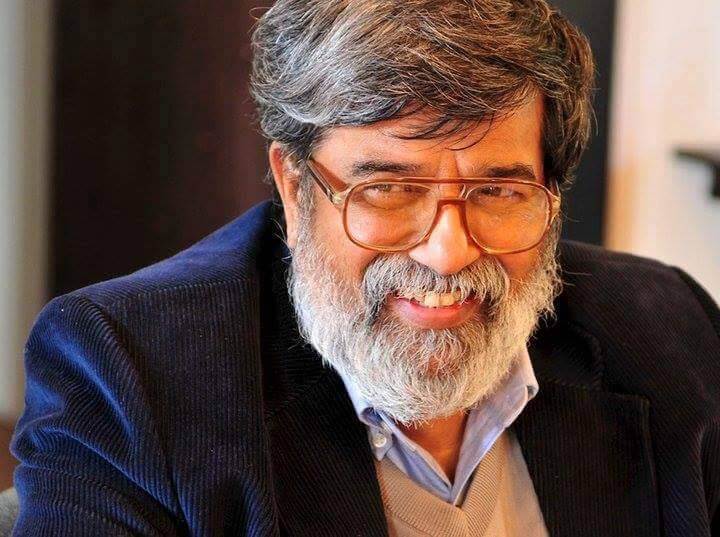The thing about Ranjan was that you couldn’t ignore him; he was prolific, he was everywhere and he had a deep, unshakeable conviction that design could and should change the world. To me, he was the friend who always stayed in touch, a philosopher whose ideas sparked an enduring fire, and the beacon whose light burned bright even in the darkest doubts. To countless others, he has been the Bamboo Man, the Crafts Man, the Design Thinking guy, the man whose course on Design Concepts and Concerns turned the notion of design practice into a universal call to action.
Prof. MP Ranjan came to his life in design from a childhood grounded in disciplined education and playful experimentation. At an early age he became involved in his father’s manufacturing enterprise, picking up carpentry skills as well as the complex nuances of trade. It was an advantage he carried with him to the National Institute of Design where he gained admission into the advanced-entry programme on account of his training as an “Experienced Cabinet Maker”. There he embarked on an adventure that would bring him to engage in ambitious design projects, interacting with leading luminaries such as Charles and Ray Eames, Frei Otto, Adrian Frutiger, Stafford Beer and Christopher Alexander. In due course, he would extract purpose and build principles from these exchanges, joining his contemporaries in championing the case for design thought and practice in a developing world.
Born in Madras, Ranjan would often remark that he had been doing design long before he came to study at NID. Making and creating new shapes for toys and furniture in his father’s workshop, he developed a life-long affinity for working with materials and testing ideas for himself. It is a habit that he tried hard to inculcate in his students. “Prototyping is the new sketching” would become a hallmark refrain, and while it would never do for him to accept a hypothesis without evidence, it did not make him a conservative pragmatist – on the contrary, it made him a practical dreamer. He urged his students to test every radical idea based on a real world model. If it could be tested, it could be improved – or discarded in favour of a better model, until a working, thriving system could be created. The trick was in asking the right questions and never being afraid to challenge the system.
The system after all, remained at the heart of Ranjan’s design philosophy. People, processes, relationships and the environment unified into an ecology within which every design solution had to exist in harmony; there could be no product without a paradigm, and no concept without a context. His experiences in developing sustainable design solutions for the crafts sector, particularly in bamboo, would become a cornerstone of his design evangelism for the real world and over time he would identify all the sectors of the economy he thought could do with serious design interventions. If India was to grow to its fullest potential, these 230 sectors, he would insist, required every designer’s urgent and engaged involvement.
What I always marvelled at however, was that even as Ranjan was occupied with developing strategies to change the world – with a persistence that earned him more than a few detractors – he had the canny ability to bring attention to the smallest details. He would be able to tell you how a particular tumbling duck toy had been weighted to waddle just so, or delight in describing how a particular bamboo chair could be constructed without metal hardware of any kind. He could show you how to draw a line correctly one day, and over a cup of chai, evaluate your business plan on another. Under him, every sketch, every prototype, every model of the universe became a focal point of deep and committed practice. It was this awareness of the infinitesimal and the immediate that endeared Ranjan to those around him: he could show you things within and without a design framework, and also around it.
So the thing about Ranjan is that we cannot forget him. As a systems thinker he was always conscious of a grand scheme of things, far beyond the perception of the rest of us. He had an enthusiastic zeal for design history but simultaneously embraced the future wholeheartedly. In talking to him, I always got the impression that time is fluid and that it is the designer’s task to be cognisant of design’s place in it. Indeed, if our profession has to rise to the challenges that the future brings, then we must realise that we stand on the shoulders of giants like MP Ranjan. The future can only begin when we acknowledge the past and realise the wealth of gifts it has endowed us with in the present.
***
MP Ranjan (1950–2015) would write regularly, publish freely and argue passionately for his beliefs, sharing his knowledge, insights and resources with anyone who needed them. He would want you, the reader, to have access to the following links:
Design for India: a valuable archive of all his thoughts and publications
Academia.edu page: a collection of his papers, design history resources, curriculum notes and lectures


1 comment
Neena Khanna says:
Sep 16, 2015
I did not know that M.P.Ranjan is no more. Really shocked ! what happened ? Do write. Thanks and may M.P.Ranjan’s soul rest in PEACE.